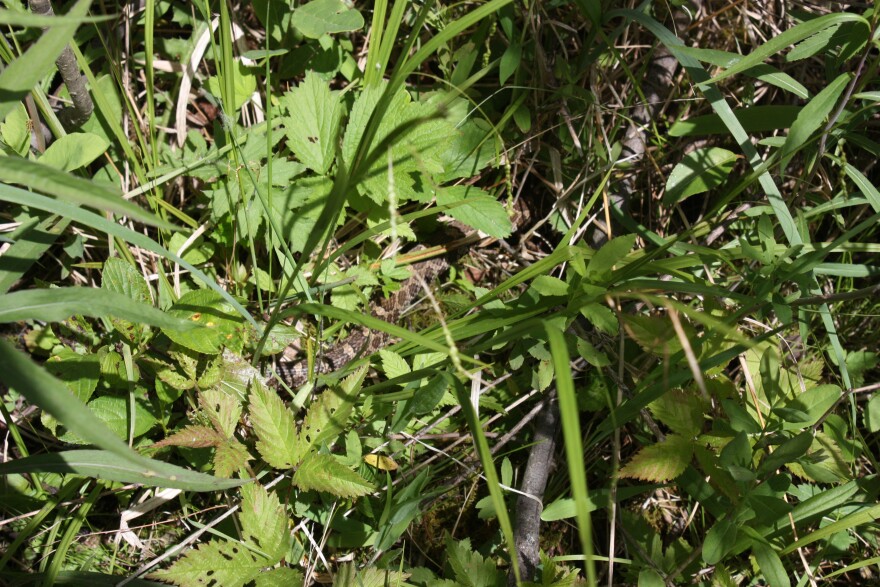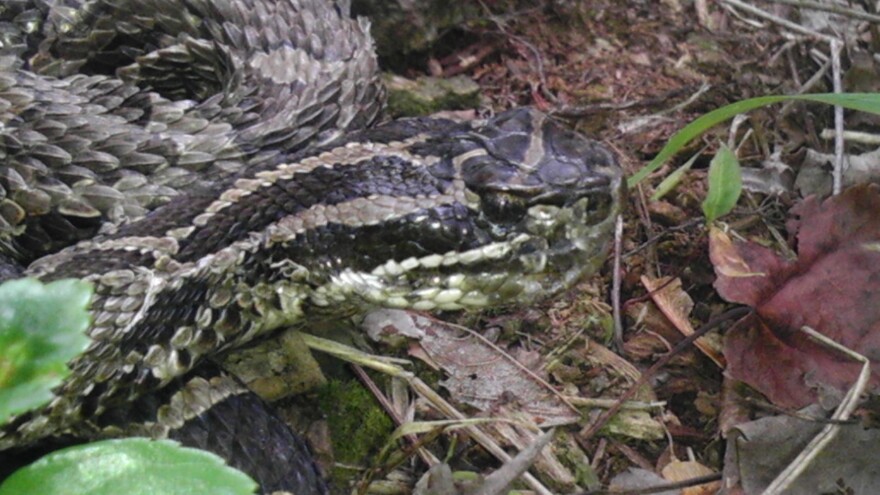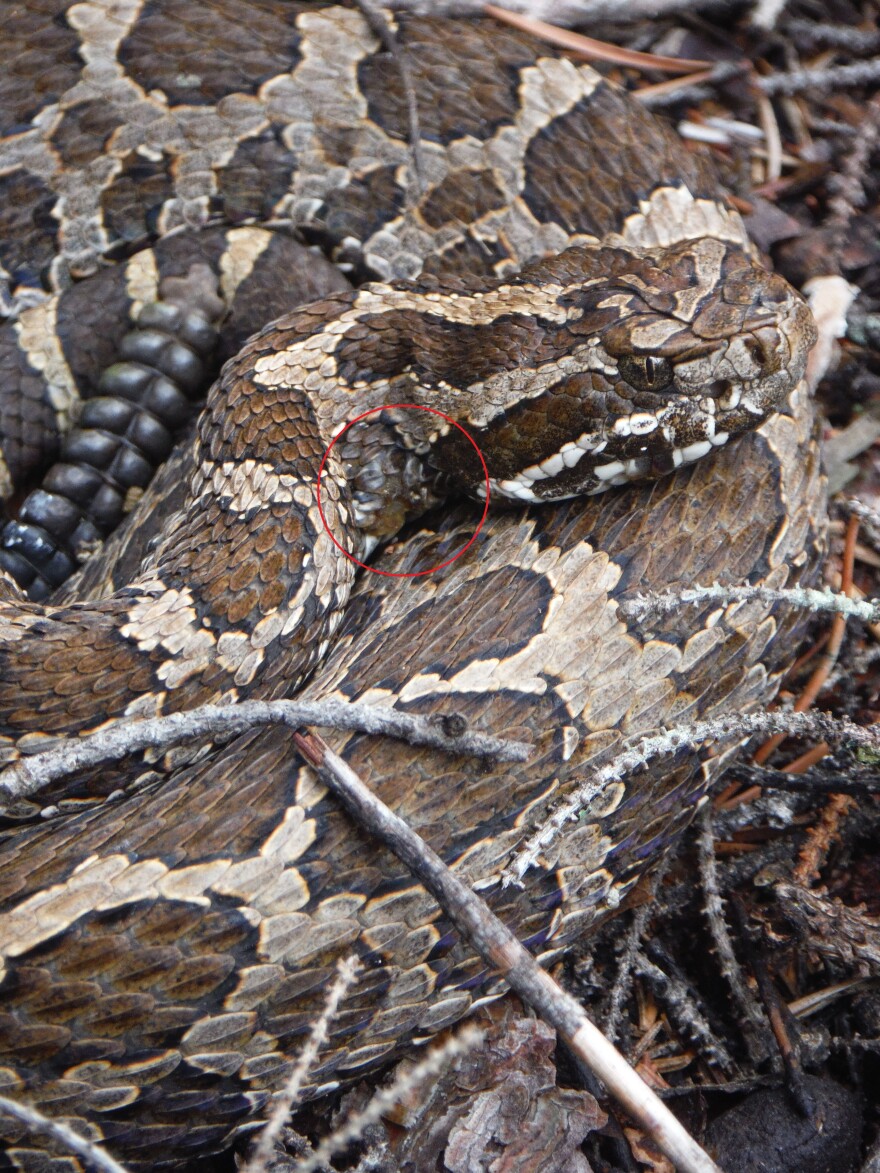When you think about rattlesnakes, you might picture Arizona. Or Texas. Somewhere out in the desert. But one snake’s rattle doesn’t come from the deserts of the Southwest. It’s from the pine forests of Michigan.
In fact, Michigan is a stronghold for the eastern massasauga rattlesnake.
The snakes face a lot of threats though, including a recently discovered fungal disease.
Tracking rattlesnakes
Snake 26 is a two and a half foot massasauga rattlesnake – the only kind of poisonous snake that lives in Michigan.
Sasha Tetzlaff and Mike Ravesi, graduate students at Purdue University, are tracking Snake 26 at Camp Grayling, an enormous National Guard Base in northern Michigan.

Tetzlaff is holding an antenna. There’s a faint beep coming from a transmitter they implanted into the snake. The louder the beep, the closer the snake is.
“It’s like a game of hide and seek that we play with the snakes all summer,” Tetzlaff says.
Tetzlaff and Ravesi are following 14 snakes this year using their radio telemetry gear.
Snake 26 is a male, and no, he doesn’t have a name. But he is healthy. Like most massasaugas, Snake 26 lives in a small, isolated population of snakes near a marshy area.

A new threat
There aren’t many massasaugas around anymore, although most of them do live in Michigan. Habitat loss is the big killer and people kill the snakes too, but they also face a new threat: it’s a fungal disease that’s been found among the snakes in parts of Michigan and Illinois.
Tetzlaff says they first discovered the fungus at Camp Grayling in 2013. Then they learned that it was showing up among massasaugas elsewhere in Michigan.
“It’s probably, likely everywhere,” Tetzlaff says. “We just haven’t found it yet.”
Snake fungal disease is similar to white-nose syndrome, which has killed many northern long-eared bats. The snakes get scabby growths on their bodies, which can warp their jaws and eventually kill them.

The disease affects other species of snakes too, but Ravesi says it’s especially deadly among massasaugas. He says once a massasauga has contracted the disease, the likelihood of mortality is just about 100 percent.
“In lab settings, almost all of them have died,” Ravesi says.
Right now there’s no known cure for the fungus, but so little is known about the disease that everything is still preliminary.
Is more protection on the way?
According to the U.S. Fish and Wildlife Service, massasaugas have lost at least 30% of their historic population. They’re listed as endangered or threatened in every state they live in, except in Michigan, where they’re a species of special concern.

The snake is also a candidate species for listing under the Endangered Species Act. The two researchers say the arrival of snake fungal disease could move it ahead on that list.
And they say that would be good news.
For one thing, there’d be more money for conservation and research. The U.S. Fish and Wildlife Service is expected to make a decision about the massasauga by September.


